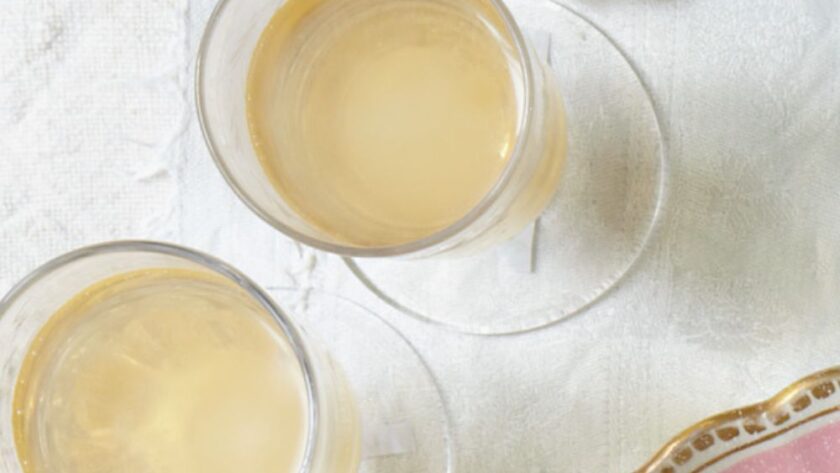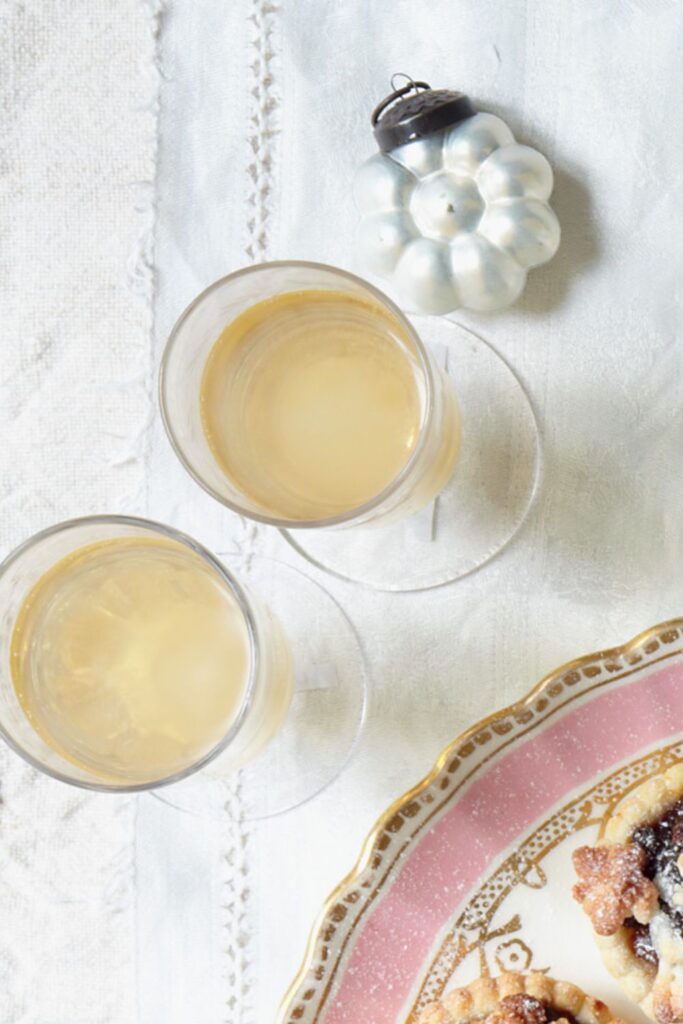To be honest, I first made this mulled wine for a carol night with the neighbours, and it nearly ended with me panic-googling “how to save burnt wine.” I’d turned the heat up too high, wandered off to find the mince pies—and came back to what can only be described as a spiced puddle of regret. The house smelled incredible, mind you, but half the alcohol had bolted.
Since then, I’ve made this one properly—slow, low, and lovingly. And when it’s done right? It’s velvety, citrusy, gently sweet, and strong enough to warm your toes and your soul. Let me show you how I fixed it.
Why This One Works So Well
Most mulled wine recipes toss everything in a pot and hope for the best—but Mary’s method is sneakily clever. First, she adds water, which stretches the wine without thinning the flavour. Second, she builds the citrus layers: zest, juice, and whole studded satsumas, all simmered gently to perfume the whole batch.
What really surprised me? Simmering for a full hour works so much better than the 10-minute rush jobs. It lets the spices mellow, the citrus infuse, and the booze stay intact—if you keep the heat in check.
INGREDIENTS + WHY THEY MATTER
- 3 lemons – Brightens everything. Zest adds oil, juice adds zing. I once skipped the zest—huge mistake. It turned out flat.
- 2 large oranges – Adds sweetness and depth. Use fresh—not the sad boxed juice.
- 12 cloves – Aromatic and strong. Sticking them in the satsumas keeps them from floating loose.
- 2 satsumas (or clementines) – Whole fruit infusion equals magic. Plus, they look lovely bobbing about.
- 2 bottles red wine (750ml each) – I go for something full-bodied but cheap. A Merlot or Shiraz works well.
- 2 cinnamon sticks – Warmth without being overpowering. Don’t use powder—it goes gritty.
- 150g caster sugar (¾ cup) – Sweetens and balances the citrus bite. Start with less; add more if needed.
Want To Change It Up
- No alcohol: Sub in pomegranate juice and blackcurrant squash with a splash of balsamic. Not quite the same, but festive and warming.
- No satsumas: Use a firm clementine or small orange. Don’t peel it—just stud it with cloves.
- Trying to cut sugar: I tried honey. It worked, but tasted a bit too “health food” for me. Maple syrup was better—if pricier.
- Spices to swap: Star anise adds a beautiful anise kick if you fancy experimenting. But don’t go overboard—one is enough.
MISTAKES I’VE MADE (AND HOW TO AVOID THEM)
| What Went Wrong | Why It Happens | How to Fix It |
|---|---|---|
| Burnt flavour | Boiled it too hard | Heat low, lid on—gentle simmer only |
| Way too sweet | Dumped in all the sugar at once | Taste after simmering, then sweeten |
| Weird bitter edge | Used bottled lemon juice | Always zest and juice fresh citrus |
HOW TO MAKE MARY BERRY’S MULLED WINE
- Prep the citrus: Thinly peel the zest off 3 lemons and 1 orange. Juice all 3 lemons and the second orange.
- Stud the satsumas: Press 6 cloves into each. Set the other orange aside to slice for garnish later.
- Heat gently: In a big pan, pour in 2 bottles of red wine and 1.2L water. Add the citrus zest, juices, cinnamon sticks, and the clove-studded satsumas.
- Simmer low: Bring it just to the boil (watch it closely), then reduce to the lowest heat, cover, and simmer for 1 hour.
- Sweeten gradually: After 45 minutes, stir in 100g sugar. Taste. If it needs more, go up to the full 150g.
- Strain and serve: Remove the satsumas and cinnamon sticks. Strain into mugs. Top with orange slices if you’re feeling fancy.

TIPS FROM MY KITCHEN
- I use my old Le Creuset pot—it holds heat beautifully and doesn’t scorch like thinner pans.
- My hob runs hot, so I move the pan halfway off the burner once it’s simmering.
- Float dried orange wheels or a star anise in each cup—looks gorgeous for guests.
- If making ahead, stop before adding sugar—sweeten fresh when reheating.
STORAGE + SERVING
- Fridge: Let leftovers cool completely, then store in a sealed jug or bottle. Keeps for 3 days.
- Reheat: Gently on the stove or in the microwave. Don’t boil.
- Freezing: I’ve tried it. It’s fine in a pinch, but the flavour dulls. Use fresh if you can.
- Serve with: Stilton and crackers, mince pies, or gingerbread. Or just on its own with fuzzy socks and a bad Christmas film.
FAQs – Real Query Answers
Q: Can I make this ahead of time?
A: Yes. I often make it a day before, cool it, and reheat gently before serving. Just don’t add the orange slices until the end.
Q: What kind of wine should I use?
A: Something robust but inexpensive—like a Shiraz, Tempranillo, or Merlot. Don’t waste a good bottle on this.
Q: Can I use dried spices instead of whole?
A: I wouldn’t. Ground spices cloud the drink and leave a gritty texture. Whole sticks and cloves are worth it.
Q: Is this safe for kids if I simmer it long enough?
A: Not really—simmering reduces alcohol but doesn’t eliminate it. For a kid-friendly version, use fruit juices instead of wine.
More Mary Berry Recipe:
- Mary Berry Toffee Sauce
- Mary Berry Wholemeal Scones
- Mary Berry Fresh Cranberry Sauce
- Mary Berry Focaccia
Mary Berry Mulled Wine
Course: Side DishesCuisine: BritishDifficulty: Easy8
servings15
minutes1
hour180
kcalA festive, citrus-spiced mulled wine that’s gently simmered for depth, warmth, and just the right kick.
Ingredients
3 lemons
2 large oranges
12 cloves
2 satsumas or clementines
2 bottles of red wine (750ml each)
2 cinnamon sticks
150g (¾ cup) caster sugar
Directions
- Peel zest from lemons and one orange. Juice all lemons and one orange.
- Stick 6 cloves into each satsuma.
- Pour wine and water into a large pot. Add zest, juice, satsumas, and cinnamon.
- Bring to boil, then reduce heat and simmer covered for 1 hour.
- Stir in sugar gradually and adjust to taste.
- Strain and serve hot, garnished with orange slices.
Notes
- I use my old Le Creuset pot—it holds heat beautifully and doesn’t scorch like thinner pans.
- My hob runs hot, so I move the pan halfway off the burner once it’s simmering.
- Float dried orange wheels or a star anise in each cup—looks gorgeous for guests.
- If making ahead, stop before adding sugar—sweeten fresh when reheating.

